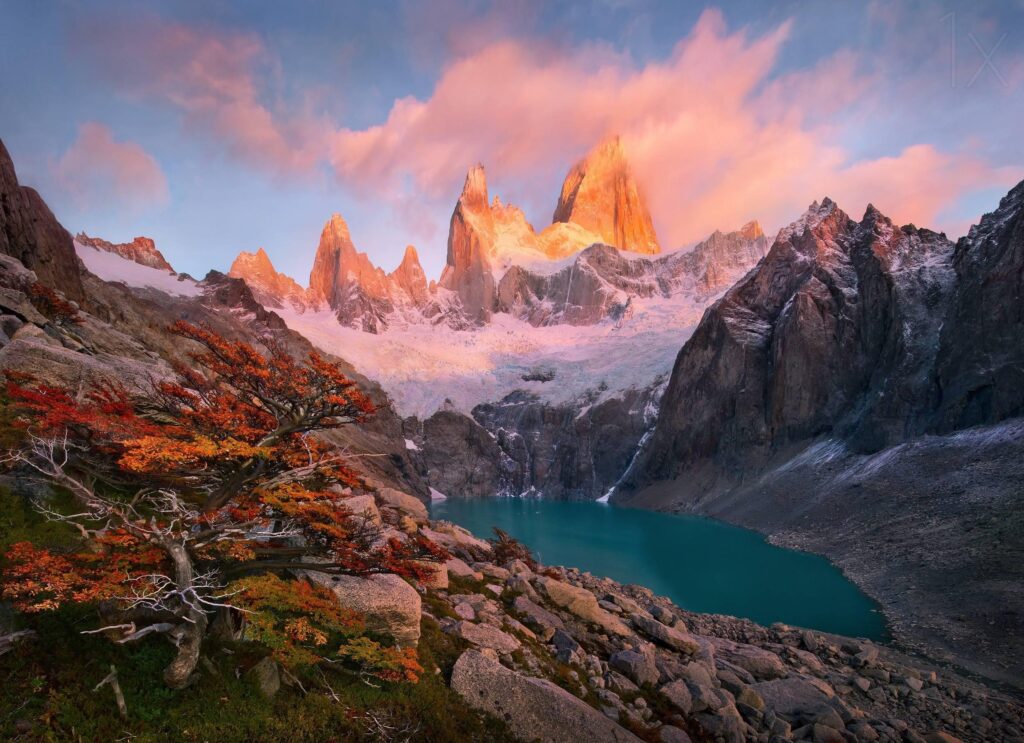
05 Juni 2021
MONTE Fitz Roy, also known as Cerro Chaltén, Cerro Fitz Roy, or simply Mount Fitz Roy, is a mountain in Patagonia, on the border between Argentina and Chile. It is located in the Southern Patagonian Ice Field, near El Chaltén village and Viedma lake.
Fitz Roy was first climbed in 1952 by French alpinists Lionel Terray and Guido Magnone.
Viedma lake — approximately 50 miles long in southern Patagonia near the border between Chile and Argentina. It’s a major elongated trough lake formed from melting glacial ice. Viedma Lake is the second largest lake in Argentina.
Patagonia is a sparsely populated region at the southern end of South America, governed by Argentina and Chile. The region comprises the southern section of the Andes Mountains, lakes, fjords, and glaciers in the west and deserts, tablelands and steppes to the east. Patagonia is bounded by the Pacific Ocean on the west, the Atlantic Ocean to the east, and many bodies of water that connect them, such as the Strait of Magellan, the Beagle Channel, and the Drake Passage to the south.
The Colorado and Barrancas rivers, which run from the Andes to the Atlantic, are commonly considered the northern limit of Argentine Patagonia. The archipelago of Tierra del Fuego is sometimes included as part of Patagonia. Most geographers and historians locate the northern limit of Chilean Patagonia at Huincul Fault, in Araucanía Region.
At the time of the Spanish arrival, Patagonia was inhabited by multiple indigenous tribes. In a small portion of northwestern Patagonia, indigenous peoples practiced agriculture, while in the remaining territory, peoples lived as hunter-gatherers, traveling by foot in eastern Patagonia or by dugout canoe and dalca in the fjords and channels. In colonial times indigenous peoples of northeastern Patagonian adopted a horseriding lifestyle.
While the interest of the Spanish Empire had been chiefly to keep other European powers away from Patagonia, independent Chile and Argentina began to colonize the territory slowly over the course of the 19th and early 20th centuries. This process brought a decline of the indigenous populations, whose lives and habitats were disrupted, while at the same time thousands of Europeans, Argentines, Chilotes and mainland Chileans settled in Patagonia. Border disputes between Argentina and Chile were recurrent in the 20th century.
Except for the boundary along the Southern Patagonian Ice Field, all of these disputes have been settled today. (*)
Text: bing
Picture: wallpapercave.com